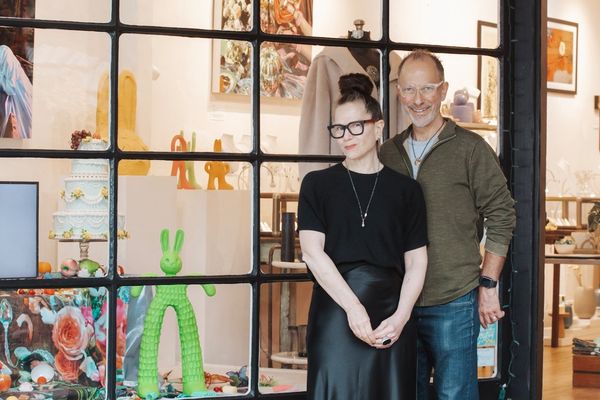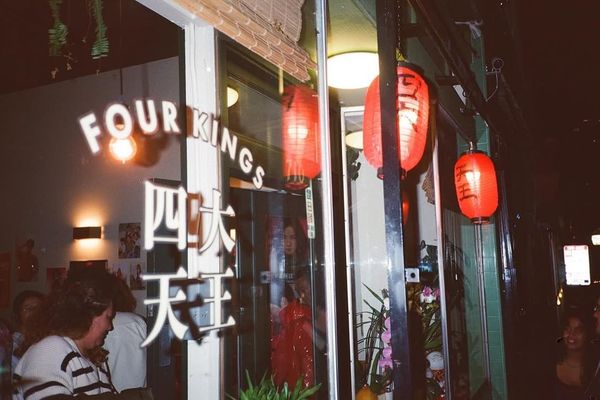The career of a freelance journalist is not without its challenges, but the job has its upsides as well. One of my favorite upsides, at least when it comes to writing about food, is the opportunity to spend time in restaurant kitchens, watching chefs as they go about their work, learning about this or that ingredient or utensil, and gleaning insights into professional techniques that cookbooks simply don't teach.
In thinking about my friends who are serious cooks, I sometimes lament the fact that, for lack of press credentials, they can't just as easily sneak into the kitchen of their favorite restaurant and enjoy a similarly enlightening experience. As it happens though, a recent evening at Cavallo Point—the luxury resort at the foot of the Golden Gate Bridge in Sausalito—put those lamentations to rest.
The hotel, which opened on the site of the former U.S. Army post Fort Baker in 2008, has a very good restaurant, Murray Circle. The resort also has a well-regarded cooking school, situated in a big, light-filled space just upstairs. The school typically offers 10 classes a month, on subjects ranging from Italian seafood dishes to pho and other Vietnamese specialties to the versatile pastry dough pate à choux. This past June, the cooking school debuted a new offering: Chef's Counter, a three-hour, four-course affair that combines elements of a cooking class with the experience of a dinner prepared by a private chef, namely, the cooking school's head chef, Tony Adams.
Equally passionate about teaching and cooking, Adams earned a Bachelor of Culinary Arts degree from Johnson & Wales University in Providence, RI, spent six years as an instructor at Le Cordon Bleu in Orlando, and worked at several notable restaurants, Oxford's Le Manoir aux Quat'Saisons among them. After assuming the head chef position at Cavallo Point's cooking school in the fall of 2016, he worked with the resort to develop the idea for the Chef's Counter series. "While this was a group effort, Tony surely deserves most of the credit," Kelsey Gummow, a representative of the resort explained. "This program is his baby, so to speak." Once a month, the resort hosts a Chef's Counter dinner for just six guests.
My wife and I managed to get the last two seats for the Chef's Counter dinner in late January. It was a chilly night, and as we arrived early, we spent some time imbibing by the fireplace at Cavallo Point's Farley Bar. At the appointed time, we made our way upstairs, where we were quickly outfitted with flutes filled with a crisply fruity bubbly from J. Lassalle, a family-owned Champagne house on the Montagne de Reims. While we sipped, Adams, ebulliently energetic and clearly jazzed about his work, gave an impromptu welcome and invited us to dive into the hors d'oeuvres: seared octopus—the tentacles arranged on vertical skewers in the manner of a flower patch—with olive oil aioli; deviled eggs with smoked shrimp and pesto, the two flavors fusing in a way that called to mind an especially nice bologna; gougères stuffed with marinated grilled artichokes; and Santa Barbara uni—which Adams described as "the biggest, creamiest and best in America," then noting that, when we eat uni, we are in fact eating the sea urchin's reproductive organs—wrapped in the tender green leaves of shiso, a kind of mint native to East Asia.
Before ushering us to our seats, Adams introduced his colleague, Cavallo Point's wine director Chappy Cottrell, whose personal tastes run toward flavorful, high-acid wines. Cottrell gave us a quick preview of the wine pairings, from a Napa Valley chardonnay whose lemon-apple minerality would complement the flavors of the first course (a butternut squash soup) to a late harvest Anderson Valley gewürztraminer whose floral, citrusy notes would go perfectly with the dinner's final act, a poppy seed Pavlova.
As we migrated to the kitchen, I took stock of Adam's setup: a massive wainscoted island with two industrial-grade ovens, 12 burners, and enough counter space on either side to accommodate bushels of produce, serious cuts of meat, or an acre of mise en place.
As soon as we'd settled into our perches, Adams was off and running. "Let's talk about hush puppies!" Hush puppies, which would accompany the butternut squash soup, he explained, are in a way related to quick bread, in that they use baking soda as a leavening agent. They are of course also fried, which enhances their deliciousness. "I don't trust people who don't like hush puppies," he intoned. These particular hush puppies were going to benefit from the fact that they were made with cornmeal from an heirloom variety of red corn grown by Full Belly Farm in the Capay Valley, northwest of Sacramento. They also weren't going to suffer from the grittiness that sometimes afflicts the delicacy because, as Adams told us, after mixing the wet and dry ingredients, he had given the cornmeal time to hydrate properly, a process that can take several hours. When the time came, he would fry the hush puppies in rice bran oil, which, although not quite as desirable as peanut oil in terms of flavor, is considerably less expensive while still offering the benefit of a high smoke point.
Adams' assistant, meanwhile, was busy at the Vitamix, pureeing the squash, which had been seasoned with ras el hanout (a Moroccan spice blend that, according to Adams, can contain as many as 150 ingredients) and roasted on a bed of onions and garlic. In the blink of an eye, they assembled the soups: a spoonful of the squash puree here, a hush puppy there, a bit of wonderfully fragrant smoked black cod, a dash of shallot persillade and, for decadence's sake, some shavings from a golf-ball-sized Périgord truffle. As the soups were set down along the counter, the atmosphere grew still and quiet, interrupted, after a time, by the sound of spoons scraping intently against the somewhat rough surfaces of Heath Ceramics bowls.
The next dish, cornmeal fried Miyagi oysters, came with a lesson in lecithin. An emulsifier found in egg yolks, lecithin plays a critical role in producing the silky texture of mayonnaise as well as of gribiche, the mayonnaise variant made from cooked rather than raw eggs that would serve as a condiment for the oysters. The lecithin in the egg yolks would get an additional boost from the whole grain mustard used in the recipe, as mustard has emulsifying properties of its own (something you can verify for yourself the next time you whisk a bit of mustard into a vinaigrette).
The Marin Miyagis were stellar: dredged in cornmeal, fried to a meaty crunch, served on a bed of bitter greens (dandelion, mustard, chickweed and watercress) and garnished with dabs of candied lemon puree, glowing orange clusters of trout roe, the aforementioned gribiche, and dots of egg yolk cooked to a silky, custard-like consistency by way of a sous vide immersion circulator. (Once a prohibitively expensive tool, Target now sells a passably good sous vide cooker for $150, Adams mentioned. Our fellow guests were unfazed by the news of the price drop. They already had sous vide machines of their own. Sophisticated company.)
While preparing the main course, king crab, Adams delved into yet more ingredients and techniques: black garlic, which when slowly fermented in temperature-controlled conditions develops a sweetly funky flavor; shio koji—rice cultured with the fungus Aspergillus oryzae, used for centuries in Japanese cuisine as a flavor enhancer; and powdered milk, an unassuming substance that, when whisked into melting butter over low heat, metamorphoses into flavorful browned flecks that can be used as a seasoning in their own right. Jotting notes as Adams whisked and chopped and dispensed tidbits of culinary wisdom rapid-fire, I found myself wondering why he doesn't have a cooking show of his own. Shortly thereafter, though, upon digging into the crab and its worlds of flavor, thoughts of television were replaced with feelings of gratitude for the chance to have been a part of a different kind of audience, and for the labors of a chef and educator who seems to have found an even more perfect medium for his talents.
// The next Chef's Counter dinner will be held March 24, 2018. For reservations ($250 per person, wine pairings included), call 415.339.4799 or email cookingschool@cavallopoint.com; Cavallo Point, 601 Murray Circle, Fort Baker (Sausalito), cavallopoint.com.



























